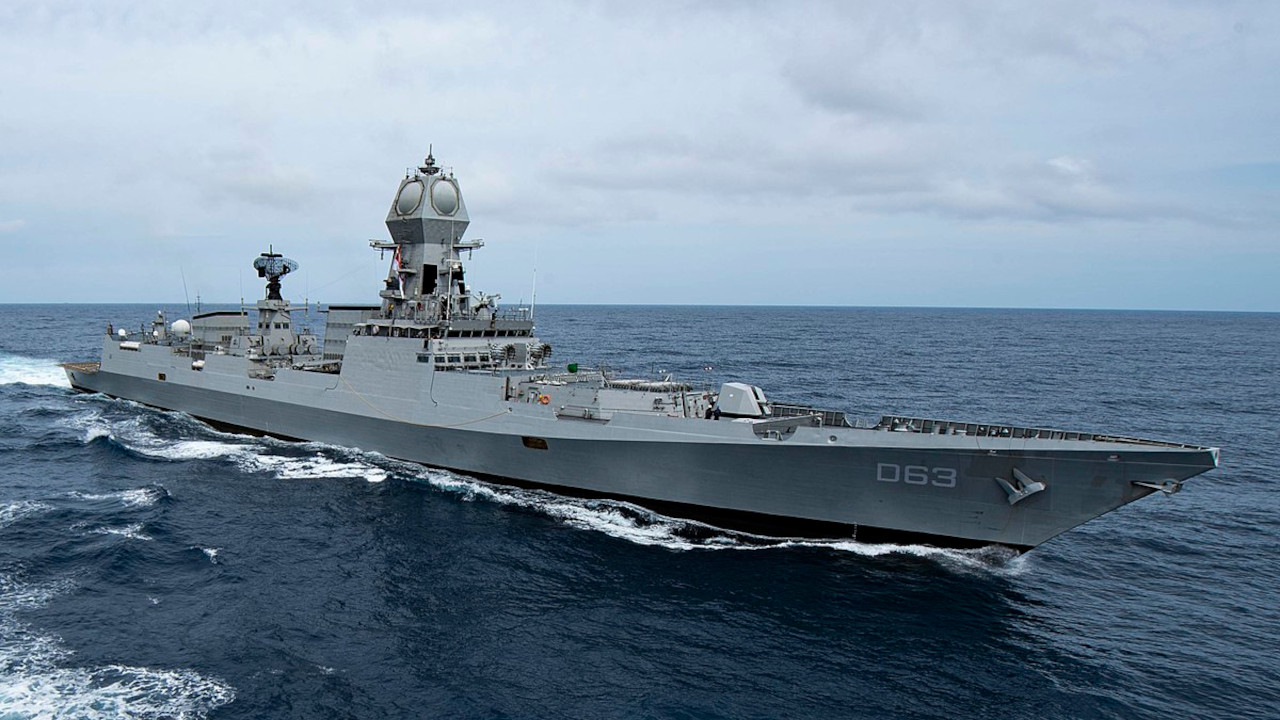India is in the process of developing an indigenous integrated mast for its warship, but in the meantime, it will be importing UNICORN (United Combined Radio aNtenna) Nora-50 integrated mast from Japan.
The technology would have been difficult for India to access, but with QUAD thriving, the Indian Navy will soon have these antennas on its future destroyers.
The Japanese UNICORN Nora-50 integrates multiple communication antennas into a single piece (mast). India still faces difficulties making ‘weapon’ grade antennas, especially radars. As discussed in an earlier EurAsian Times report, India still relies on imported sets for its communication network. Encryption in the military-grade communication set is another issue.
Also, Japan’s agreement to export military items circumventing its hesitation is a big step. If the deal comes through, it will be only the second instance of Japan exporting defense equipment since it revoked the ban on military sales in 2014. The first military export happened in 2023 when radar systems were exported to the Philippines.
The Japanese law forbids the export of defense equipment that could be used as a lethal weapon. The UNICORN would not violate the law as it is a communication tool. India’s External Affairs Minister, Dr. S. Jaishankar, was in Japan earlier this month.
Unicorn systems are in service onboard Japan Maritime Self-Defense Force’s Mogami-class destroyers. The system’s horn-shaped structure has numerous antennas for tactical data links. TACAN (Tactical Air Navigation System) and communications are integrated within the mast’s design, reducing signature and ship-building time and saving below-deck space.
At present, the Indian Navy uses the BEL-supplied Advanced Composite Communication System (ACCS), a fourth-generation voice and data integrated system for ship external communication.
The units include systems like the 1kW Transmitter Aerial Switching Rack (ASR) to switch four High-Frequency (HF) Transmitters to four HF Antennas. This assists the user in switching any radio to any of the antennas for redundancy, and the user can also remotely control the same utilizing an IP-based Network.
In other words, the Indian philosophy is to follow space-frequency diversity.
“Unicorn’s pathbreaking design brings improvements by way of reduction of the antennas’ mutual interference, reducing the ship’s overall Radar Cross Section (RCS), enhancing maintainability and lightning resistance,” Commander Milind Kulshrestha (retired) from the Indian Navy explained.
“This innovative Japanese design has evolved from their TACAN antenna design framework. In a TACAN system, the Naval platform constitutes a mobile transmitting unit. The airborne unit, in conjunction with the Naval platform, processes the transmitted signals to a visual presentation of both azimuth and distance information,” he adds.
The UNICORN system can detect the movement of missiles and drones from afar with its ability to sense radio waves from a wide area.
The NORA-50 antenna was jointly developed by Japanese companies, including electronics maker NEC and Yokohama Rubber. A report in the Nikkei Asia said that the Japanese government is still deciding how many antennas will be sold and is working out the contract cost. The deal is seen from the prism of strengthening deterrence of like-minded countries in the Indo-Pacific region.
This year, a QUAD (Quadrilateral Security Dialogue) summit is expected in India. Japan, Australia, the US, and India are part of this geo-political grouping. Reports indicate that the deal will likely be inked during the meetings between Indian and Japanese leaders.

Diversifying Its Military Supplier
Despite the Indian government’s thrust on indigenization and the Western countries slowly nudging India away from Russia, New Delhi continues to import arms, and Moscow is a major supplier.
According to the latest data on international arms transfers released by the Stockholm International Peace Research Institute (SIPRI), India’s arms imports increased by 4.7 percent between 2014-18 and 2019-23. This spike was caused by emergency acquisitions from Russia, the US, France, and Israel in the aftermath of the continued standoff on the border with China.
Despite countries like the US and now Japan agreeing to export to India, Russia remains New Delhi’s main weapons supplier, accounting for 36 percent of its arms imports. Russia’s overall share, however, has been steadily declining, with India increasingly turning to Western countries for military hardware and software as well as indigenous suppliers.
According to SIPRI, 2019-23 was the first five-year period since 1960–64 when deliveries from the Soviet Union/Russia made up less than half of India’s arms imports. Russia’s exports to India decreased by 34 percent between 2014–18 and 2019–23.
The last big purchase of India from Russia was the S-400 surface-to-air missiles. Despite global sanctions, India has continued to purchase oil and gas from Russia.
While most of the countries continue to support India’s efforts to manufacture weapons and platforms in India under technology transfer, it remains to see if Japan would also be open to the idea.
Minister Jaishankar said during his visit that in addition to the prospects for joint defense production, there is “enormous potential” for cooperation on new and critical technologies, including semiconductors, artificial intelligence, renewables, electric mobility, and more.
India, in March, approved its first semiconductor fabrication plant and two assembly units to be developed jointly by local conglomerates and companies from Japan, Taiwan, and Thailand.
- Ritu Sharma has been a journalist for over a decade, writing on defense, foreign affairs, and nuclear technology.
- The author can be reached at ritu.sharma (at) mail.com
- Follow EurAsian Times on Google News




